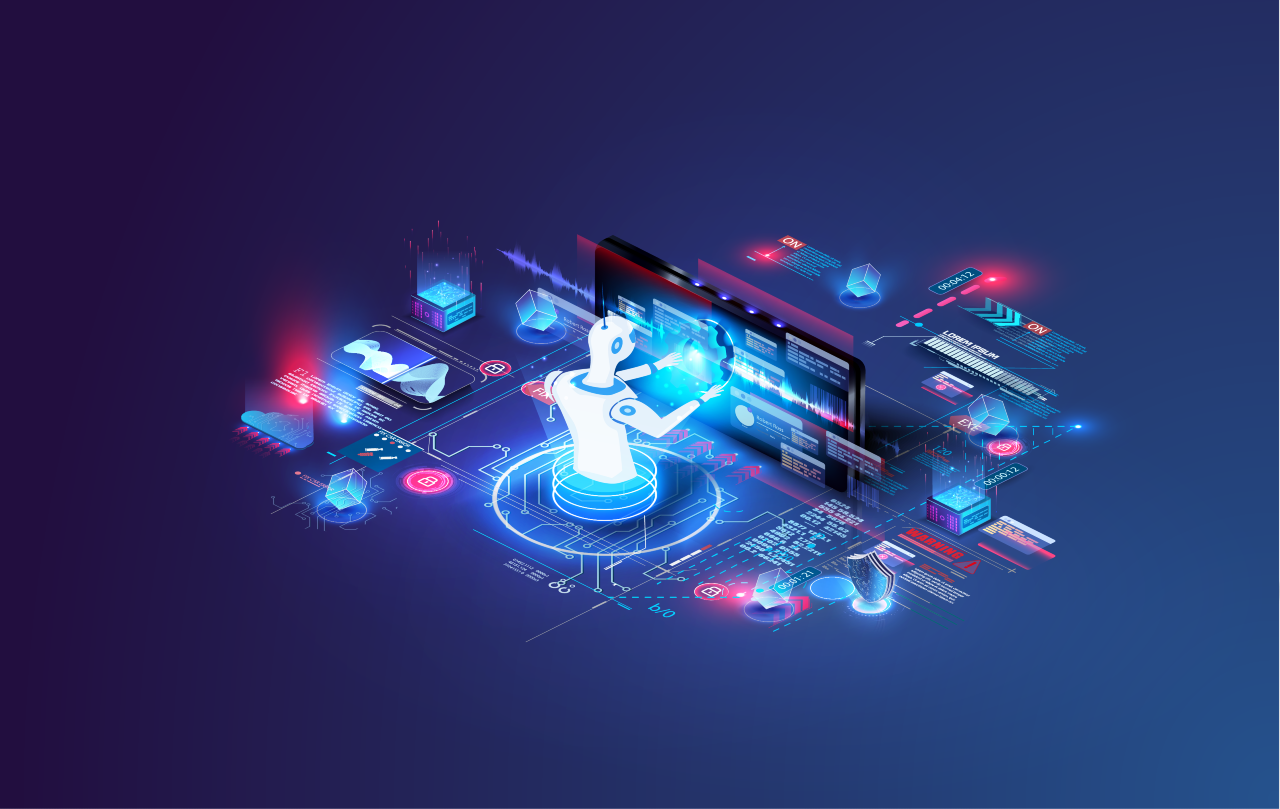It’s clear that AI has hit the mainstream – deploying Artificial Intelligence to solve business problems has become the rule rather than the exception.
According to McKinsey, between 50 and 60 percent of organizations have adopted AI, and 63% are planning on increasing their AI adoption. But as we enter 2023, we should all think about where AI is going and where it’s been.
AI in 2022
The 2020s have seen a number of AI growth spurts and quite a lot of splashy news coverage. Perhaps the most talked-about (and the most recent) is ChatGPT. ChatGPT has perfectly illustrated the forward leaps of natural language processing and generation. And it’s certainly stirred up a lot of excitement (and anxiety). We’ve also seen AI and Machine Learning (ML) solve International Math Olympiad problems and model complex scientific concepts.
And yet, despite this growth, there’s been some issues around adopting and furthering the use of AI in the business world. The McKinsey report we quoted above, while highlighting AI’s acceptance, also pointed out a certain leveling off in the number of organizations using AI. Among those that have adopted it, however, the report notes an increase in enhancing their AI’s current capabilities and finding new use cases, particularly in the realms of customer service and service/product optimization or creation.
AI Trends for 2023
This year, we can expect to see the following areas of AI garner more traction and interest:
Generative AI
Generative AI simply means any AI system that can create data without direct human supervision. This data can be images, text, computer code, etc., but the critical difference is that it has been generated by the program, not harvested from any real-life source. Hence the name: generative AI.
While it may seem like generative AI would most likely be employed on deepfakes (or, at the very least, memes), it has been put to very businesslike use. This Fast Company article lists applications in healthcare, marketing, and pharma, with many use cases centering around creating and managing knowledge content.
FastSaaS – which merges AI with low- and no-code solutions – is a related aspect of AI and generative AI that looks set to attract more interest. Here, the link is how companies with generative AI capabilities are offering it as a Cloud-based service to other companies. So expect to see more businesses adding AI generation tools to their existing offerings and using AI to develop new offerings more quickly.
Computer Vision and Language
This has been an ongoing trend in the world of business AI. While we’ve already discussed its generative aspect above, we should also point out that there will be increasing abilities in the processing of natural language and images. Image recognition, textual and sentiment analysis, and other applications of vision and language processing are already well-known and experiencing relatively wide use. But as companies continue to recognize the value of the information contained in this type of data – and as technology and computing continues to evolve – we can expect to see computer vision and language processing improve and find new applications.
As we’ve seen, large language processing models are becoming more capable and sophisticated. Now, we’re using them to answer questions, translate texts, and create computer code, and compose specialized texts, but there’s usually some quality issues. Look for these quality issues to begin to evaporate as these models mature.
Explainable AI
People are both fascinated by and distrustful of Artificial Intelligence. In a bid to make AI more effective, many organizations are promoting more transparent AI processes. The idea is that humans will feel more comfortable trusting the algorithms’ decisions if they understand the reasons behind the recommendations. This can also help us ensure a more equitable and realistic AI environment.
AIOps
We’re all familiar with AI as a process enhancer; we’ve seen it work in manufacturing and other industries for years. Well, in 2023 we can expect to see AI increasingly become a partner in optimizing the IT workflow. The familiar methodology of automating routine tasks and information analysis/processing will combine with IT operations to become AIOps. Businesses are already using AIOps to monitor and manage performance and system availability, analyze incident reports, and suggest proactive improvements to fix potential problems.
Where AI Is Going in 2024 and Beyond
Finally, let’s talk about what will happen next year and beyond – in other words, what new developments are being nurtured in the AI field. As you might guess, there are many things we could discuss, but we’ll only mention two: edge computing and quantum computing.
Edge computing seeks to improve performance at the edges of networks, where performance often suffers. Edge AI is the application of AI to edge computing – using AI to make networks more stable and reliable regardless of whether the device is located at the centre or fringe of the network. Look for this technology to be further developed and eventually implemented in large, complex networks.
In a similar vein, look for AI to team up with quantum computing, which offers even more speed and power than what is currently widely available. Several companies are already demonstrating this as a real possibility, and it will be interesting to see how it spurs AI (and how we use AI) to new heights.
Authored by: Anil Kaul, CEO at Absolutdata, an Infogain Company and Chief AI Officer at Infogain
Related Absolutdata products and services: Analytics, Data Science & AI, NAVIK AI Platform, NAVIK Sales AI, NAVIK Marketing AI, NAVIK Technology AI, NAVIK Operations AI































